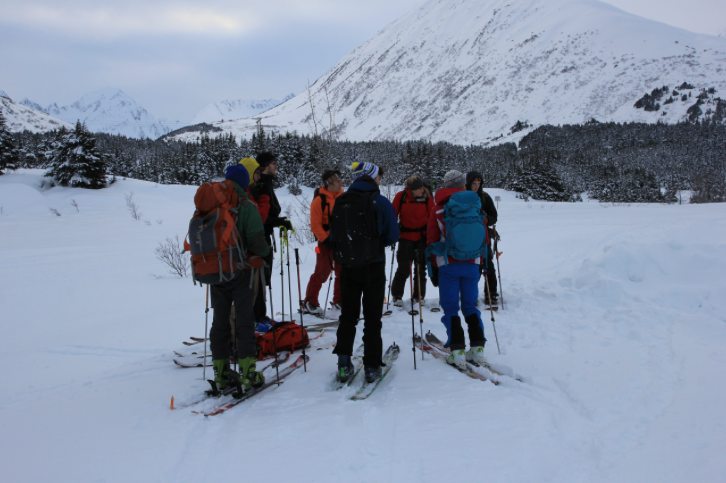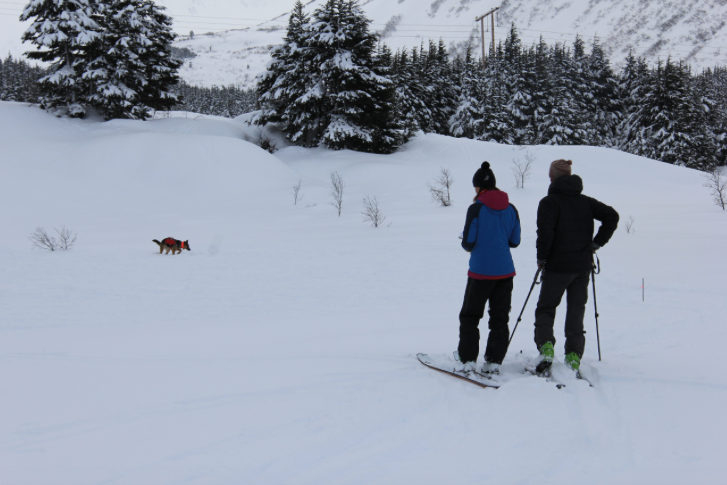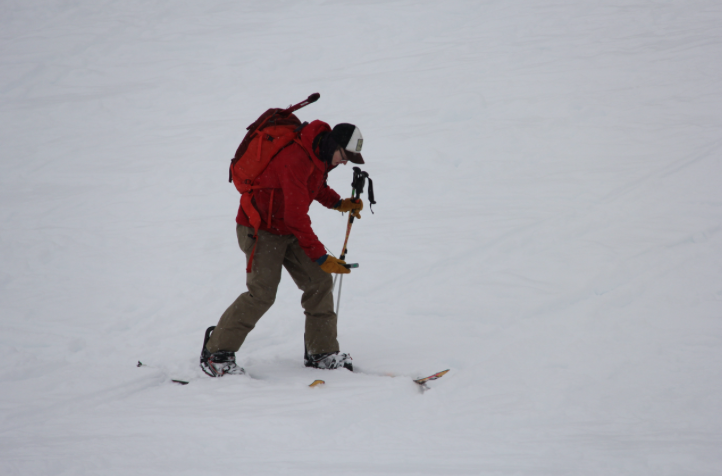
Though the temperature was below freezing, Professor Eeva Latosuo’s Snow Science 1 class was sweating. Armed with small, collapsible shovels, the dozen or so students skied around a 20 by 60 foot plot, digging holes at random.
On the other side of a nearby berm was LZ, an avalanche rescue dog in training, who had spent the prior two years working towards today. Somewhere in that plot three sweaters were buried. LZ was to find them in the allotted time, the students were to make sure the test wouldn’t be too easy for her.
“Dogs are smart,” Latosuo said. “If the dog can easily see the holes where the clothes are buried, they’ll go right there and dig them out. We’re making it less obvious, so the dog will have to use its nose to find them.”
This test, conducted on February 24, was the first of three before LZ can become a certified Search and Rescue dog – the other tests involve endurance and finding a person buried in snow.
Latosuo’s Snow Science classes often interact with Search and Rescue dogs – the last three courses saw appearances of avalanche dogs.
“APU has a robust history in doing avalanche dog research, including three recent senior project on the topic presented at the International Snow Science Workshops,” Latosuo said. “Exposing students to avalanche dogs might piqued their interest in continuing on this research track.”

Test proctors look on as LZ searches for the buried clothing
LZ passed her test – but hers was just the first of many tests that afternoon.
The Snow Science 1 students were also starting a three-part series of testing that will end in a Level II Avalanche Certification.
The student’s objective was to find two buried beacons in under six minutes using an avalanche transceiver, probe and shovel. Though technically a practice test, if students passed on the first try, they wouldn’t have to do it again. Many of the students finished with plenty of time to spare. Their next two tests will prove they can do companion rescues and can identify various aspects of a snow pit.

A student searches for a beacon in the snow
Over the course of the semester, Snow Science students have explored the various elements that lead to avalanches: terrain, weather, snow pack. Understanding how to recognize those properties, Latosuo said, teaches students to make good decisions in avalanche terrain.
For some, the newfound skill set will be a prerequisite for jobs like mountain guiding, ski patrolling or educating on avalanches. Though for most of the students, completion of the class means they have solid handle on skills needed for recreational backcountry travel.
